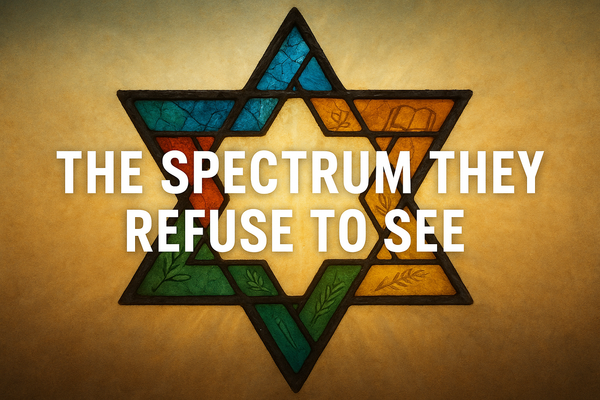Ashkenazi Jews: Origins, Migrations, and Genetics

Ashkenazi Jewish history and genetics are deeply intertwined with their religious identity, specifically through their unique minhagim (customs), within the broader context of how identity is defined by various factors. The sources provide a comprehensive overview of how these elements have shaped Ashkenazi Jewish distinctiveness and how they are understood today.
Historical Trajectory of Ashkenazi Jews
Ashkenazi Jews are a distinct subgroup of the Jewish diaspora that emerged in the Holy Roman Empire around the end of the first millennium CE. The term "Ashkenazi" initially referred to a distinct cultural group of Jews who settled in the 10th century in the Rhineland, in western Germany.
Historically, Ashkenazi Jews originate from the Israelites and Hebrews of ancient Israel and Judah. Jewish communities began to form in southern Europe from the fourth century BCE due to various push and pull factors, including wars, persecution, unrest, and opportunities in trade and commerce. Following the Roman conquest of Judea and subsequent revolts (66–73 CE and 132–136 CE), many Jews were captured and sold into slavery, leading to a significant Jewish diaspora across southern Europe.
By the Early Middle Ages, Jewish merchants settled north of the Alps, and by the 11th century, settlers from southern European and Middle Eastern centers began to settle along the Rhine in response to economic opportunities and invitations from Christian rulers. Key cities like Speyer, Worms, and Mainz became crucial in forming Ashkenazi Jewish religious tradition. Over centuries, persecutions and expulsions from England (1290), France (1394), and parts of Germany (15th century) pushed Ashkenazi Jewry eastward into Poland, Lithuania, and Russia, which became major centers of Ashkenazi life until the Holocaust.
In modern history, Ashkenazi Jews underwent a cultural reorientation due to the Haskalah (Jewish Enlightenment) and the struggle for emancipation, leading some to abandon Yiddish for German and develop new forms of Jewish religious and cultural identity. The Holocaust, carried out by Nazi Germany during World War II, tragically killed about six million Jews, significantly diminishing the Ashkenazi population and ending the dynamic development of the Yiddish language for many. Post-Holocaust, many surviving Ashkenazi Jews emigrated to countries like Israel, Canada, Argentina, Australia, and the United States. Ashkenazi Jews have since comprised the majority of the American Jewish community since 1750 and played a prominent role in Israel's economy, media, and politics.
Genetics of Ashkenazi Jews
Genetic studies have provided significant insights into Ashkenazi Jewish origins, consistently pointing to a Middle Eastern origin with European admixture.
- Paternal Lineages (Y-DNA): Ashkenazi Y-DNA overwhelmingly reflects a paternal origin in the Middle East. Haplogroups J (~38%) and E (~20%) are predominant, with minor presences of R1a, R1b, and G. The Ashkenazi Y-DNA profile is "virtually indistinguishable from the Middle Eastern ones yet completely different from the European ones". While R1a and R1b are common in Europe, analyses show that R1a in Ashkenazi Levites, for instance, primarily belongs to the Asiatic R1a-Z93 clade (specifically R1a-M582/R1a-CTS6), not the European R1a-Z282 subclades. This indicates a Middle Eastern origin for these lineages in Ashkenazim, rather than post-exile European admixture.
- Maternal Lineages (mtDNA): The maternal lineages are more complex. A 2013 study suggested that over 80% of Ashkenazi maternal ancestry derives from women indigenous to Europe, primarily Italian and Old French origins, pointing to a significant role for the conversion of women. However, a 2006 study suggested that about 40% of Ashkenazi maternal lineages descend from four women "likely from a Hebrew/Levantine mtDNA pool" in the Middle East. A 2014 study found a frequency of haplogroup K in Ashkenazi maternal DNA suggesting an ancient Near Eastern origin, contradicting some of the 2013 findings. More recently, a 2025 study found that most maternal lineages trace back to a small founding group of about 150 individuals, supporting a unified Near Eastern origin for both maternal and paternal lineages and contradicting earlier theories of mixed origin.
- Autosomal DNA: Autosomal studies, which examine DNA from all ancestral lines, describe the Ashkenazi gene pool as approximately 60% Middle Eastern (mostly Levantine) and 40% European. Ashkenazi Jews cluster closely with other Jewish populations from southern Europe, Syria, and North Africa, as well as with Southern Europeans (e.g., Italians) and modern Levantines (e.g., Druze, Cypriots, Lebanese, Samaritans).
- Founder Event/Genetic Bottleneck: Genetic studies reveal that Ashkenazi Jews display the homogeneity of a genetic bottleneck, meaning they descend from a much larger population whose numbers were greatly reduced but recovered through a small number of founding individuals (estimated at around 400 families) who left Northern Italy around 1000 CE. This has led to certain disease-causing mutations being widespread in modern Ashkenazi Jews.
- Medieval Genetic Diversity: Ancient DNA analysis of medieval Jews from Erfurt, Germany, revealed two distinct subgroups: one with greater Middle Eastern ancestry (possibly from Western Germany) and another with greater Eastern and Central European ancestry. Modern Ashkenazi Jews are a mix of these groups, showing a genetic homogeneity today that was not present in the past.
The Khazar Hypothesis and its Discredit
The "Khazar hypothesis" posits that Ashkenazi Jews are primarily descended from converts to Judaism among the Khazars, a multi-ethnic Turkic people who formed a khanate in the Caucasus and Pontic-Caspian steppe. This hypothesis, which emerged in the 19th century and gained wider attention with Arthur Koestler's "The Thirteenth Tribe" in 1976, suggested that after the collapse of the Khazar empire, these converts fled to Eastern Europe and formed a large part of the Jewish population there.
However, the sources clearly state that the Khazar hypothesis is a "largely abandoned historical hypothesis" and is "unsubstantiated by genetics". Geneticists, including Doron Behar and colleagues, have concluded that there is no substantive evidence of a Khazar origin among Ashkenazi Jews and that such a link is unlikely. Studies have found no genetic markers in Ashkenazi Jews that link them to peoples of the Caucasus or Khazar area, instead showing shared ancestry with other Jewish populations and Middle Eastern/European groups. While some scholars have defended its plausibility, their studies (e.g., Eran Elhaik's) have been widely criticized for methodological flaws and proxy choices.
The Khazar hypothesis is frequently cited in antisemitic arguments, aiming to express the belief that modern Jews are not true descendants of the Israelites. It is used to delegitimize Zionism and Israel's re-establishment as a "white European settler-colonial project" by attempting to erase Ashkenazi origins in the Levant. This narrative has been exploited in anti-Zionist polemics, racist literature, and by extremist groups, portraying Ashkenazi Jews as "imposters" or "privileged oppressors".
Religious Identity (Minhagim) in the Context of Definition and Identity
Ashkenazi Jewish identity is fundamentally defined by religious practice and custom.
- Religious Definition: In a religious sense, an Ashkenazi Jew is defined by their family tradition and ritual following Ashkenazi practice. Due to their geographical distance from earlier Jewish religious authority centers in the Islamic world, the Ashkenazi community developed its own unique minhag. Observant Jews consider it vital to ascertain their household's religious ancestors to know which customs to follow, especially in cases of intermarriage or conversion.
- Distinct Minhagim: Specific differences in practice (minhagim) between Orthodox Ashkenazi and Sephardic Jews include:
- Pesach (Passover) observance: Ashkenazi Jews avoid legumes, grain, millet, and rice, which Sephardi Jews generally permit.
- Dietary Laws: Ashkenazim freely mix and eat fish and milk products, while some Sephardic Jews do not.
- Hair Covering: Ashkenazim are more permissive toward wigs as hair covering for married women.
- Animal Portions: Sephardi Jews permit rear portions of an animal after sciatic nerve removal, which many Ashkenazi Jews do not.
- Naming Children: Ashkenazi Jews often name newborns after deceased family members, not living relatives, unlike Sephardi Jews who commonly name after living grandparents.
- Tefillin: Ashkenazi tefillin are traditionally wound towards the body and donned while standing, unlike other Jews who generally do so sitting.
- Hebrew Pronunciation: Ashkenazic traditional pronunciations differ, notably with the Hebrew letter tav in certain words pronounced as an /s/ sound instead of /t/ or /θ/.
- Prayer Shawl (Tallit): All Ashkenazi men traditionally wear a tallit after marriage (or from Bar Mitzvah in Western Europe), whereas in Sephardi/Mizrahi Judaism, it's commonly worn from early childhood.
- Liturgical Tradition: The term "Ashkenazi" also refers to the Nusach Ashkenaz, a specific liturgical tradition found in their prayer book (siddur), defined by prayer choices, order, text, and melodies.
- Blurring of Religious Definitions: With global integration, particularly in Israel and North America, the religious definition of an Ashkenazi Jew is blurring, especially outside of Orthodox Judaism. New developments like the chavurah movement and "post-denominational Judaism" often unite Jews of diverse ethnic backgrounds. The traditional Ashkenazi pronunciation of Hebrew has significantly declined in favor of the Sephardi-based Modern Hebrew pronunciation outside of Haredi communities.
Broader Context of Definition and Identity
Beyond religious practice, Ashkenazi identity is also understood through cultural and ethnic lenses.
- Cultural Identity: Culturally, Ashkenazi identity is closely tied to Yiddishkeit (Jewishness in Yiddish), which traditionally involved Torah and Talmud study and life governed by Jewish Law. With modernization, Yiddishkeit has expanded to encompass diverse movements, manners of speech, humor, and support for Jewish institutions, even as fewer Jews speak Yiddish.
- Ethnic Identity: Ethnically, an Ashkenazi Jew's ancestry is traced to Jews who settled in Central Europe, forming a reproductively isolated population for about a thousand years. Genetic studies confirm their Middle Eastern origin with European admixture, yet they have largely retained their Israelite ancestry. Despite some European admixture, their identity as a Middle Eastern diaspora population originating in the Levant is considered "factually indisputable".
- Challenges to Identity: Modern challenges include commercial DNA tests that may misleadingly classify Ashkenazi Jews as "100% European" due to their population scheming, despite disclaimers about Levantine roots. Anti-Zionist narratives often exploit this misrepresentation to deny Ashkenazi Jews' connection to the Levant. However, the sources emphasize that mixedness, "blood quantum," or genetic purity do not determine peoplehood, ethnicity, or collective identity; indigeneity through ethnogenesis determines collective identity, and no amount of admixture or time changes this fundamental truth.






